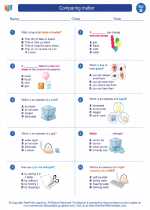Comparative Anatomy
Comparative anatomy is the study of similarities and differences in the anatomy of different species. By comparing the anatomical structures of different organisms, scientists can gain insight into their evolutionary relationships and adaptations to their environments.
Importance of Comparative Anatomy
Comparative anatomy provides valuable information about the evolutionary history of organisms and helps scientists understand the functional and structural adaptations that have occurred over time. It also allows for the classification of organisms into groups based on their shared anatomical features.
Key Concepts
- Homologous Structures: These are anatomical structures that are similar in different species because they are inherited from a common ancestor. For example, the forelimbs of vertebrates have a similar bone structure, indicating a common evolutionary origin.
- Analogous Structures: These are anatomical structures that serve similar functions in different species but have different evolutionary origins. For example, the wings of birds and insects have similar functions for flight but have different underlying structures.
- Vestigial Structures: These are anatomical structures that have lost their original function in the course of evolution. For example, the human appendix is a vestigial structure that is thought to have had a digestive function in our evolutionary ancestors.
Study Guide
When studying comparative anatomy, it's important to focus on the following areas:
- Understanding the concepts of homologous, analogous, and vestigial structures.
- Comparing anatomical features across different species to identify similarities and differences.
- Exploring the relationship between form and function in anatomical structures.
- Considering the environmental and ecological factors that have influenced the evolution of anatomical features.
- Examining how comparative anatomy contributes to our understanding of evolutionary relationships among organisms.
By mastering these key concepts and study areas, you can develop a comprehensive understanding of comparative anatomy and its significance in the field of biology.
[Comparative Anatomy] Related Worksheets and Study Guides:
.◂Science Worksheets and Study Guides Second Grade. Comparing matter

 Activity Lesson
Activity Lesson
 Worksheet/Answer key
Worksheet/Answer key
 Worksheet/Answer key
Worksheet/Answer key
 Worksheet/Answer key
Worksheet/Answer key
 Vocabulary/Answer key
Vocabulary/Answer key
